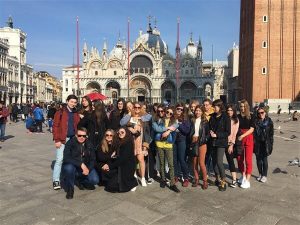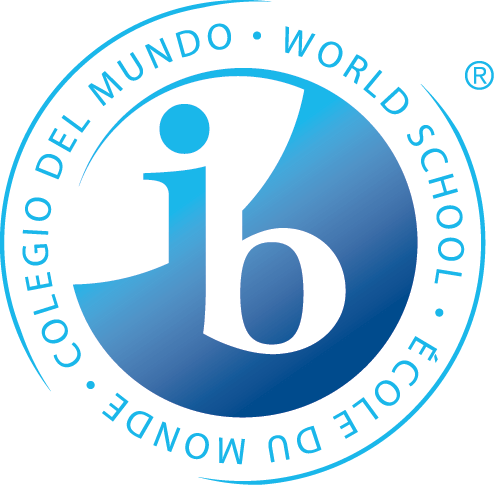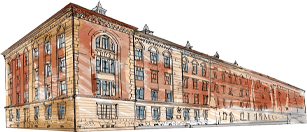On March 13 this year, a group of students from High School No. 6 under the supervision of prof. Paulina Leśniak and prof. Marcin Mikrut went on a trip to one of the most beautiful Italian cities, Padua. We met at the airport in Krakow. Each of us was very excited and curious about what our exchange will look like and what our Italian partners will turn out to be. We came to Padua in the evening, Italian families and teachers were waiting for us.
The next morning, we went to our Italians’ school – Liceo Ippolito Nievo, which is the oldest in Padua, and the building dates back to the 16th century. The next item on the agenda was a walk around the city. We saw the most important squares of Padua – Piazza delle Erbe, Piazza della Frutta, Piazza dei Signori. We were surprised how dynamic the city center is, it is in the squares that the inhabitants’ life is teeming with, among the stalls with flowers, clothes, accessories and fresh food. We also visited the seat of the University, the second oldest university in Italy. The walls of the building are richly decorated with the names and coats of arms of the most eminent graduates. It is worth mentioning that we found a lot of Polish names on them! The auditorium is a place where the famous Galileo conducted lessons. The room is definitely breathtaking. Likewise, the anatomical theater, the first in Italy. Caffè Pedrocchi at the foot of the university is the oldest cafe in Padua, which is impossible to miss during a tour of the center. Just walking inside took us all back in time.
On the same day, integration took place through cooking together! Our task was to make our own pasta – tagliatelle. For most of us, it was the first time in making pasta dough, so it was not always downhill. Fortunately, our Italians served us with a helping hand. Of course, it was not without laughter, as our protective clothes and skills seemed downright comical! The end result probably surprised us all and we were extremely proud of the delicious food.
On Friday we went to Venice. We started our walk in the world’s first ghetto. Venice charmed us at the very entrance, with its characteristic bridges, canals and beautiful buildings. The architecture of this city sets it apart from all the others. We recognized the Grand Canal that divides Venice into two parts. We took pictures at the famous Venetian bridges: Rialto and Sighs. Of course, we also found ourselves in St. Mark and visited the Basilica. We were all delighted with the extraordinary craftsmanship and richness of each wall. The mosaic on which the entire Basilica is decorated makes the greatest impression. We also got to the island of San Giorgio Maggiore to see Venice from a different perspective. Finally, we sailed the Grand Canal by local public transport – vaporetto – straight to the train station.
We spent Saturday in Padua. In the morning we saw frescoes made by Giotto in the Scroven Chapel. They tell the story from the times of Joachim and Anna, through the life of Mary, until the resurrection of Jesus. The hell depicted on one of the walls is very impressive and delights with the richness of details. An interesting fact is that one of the frescoes shows the first kiss in the history of painting – the kiss of Maria’s parents. Another important point of Padua that we saw was the Basilica of St. Anthony, a place of religious worship that houses the tomb of St. Anthony and many relics. After a moment of quieting down in the Basilica, we headed towards Prato della Valle. It is a huge square in the heart of Padua, one of the largest in Europe. Beautiful statues of distinguished inhabitants of Padua surround the square around the canal and in the middle, around the fountain. It used to host a regatta, today it is a popular place among students who rest here after classes.
On Monday we went to visit Verona. It was the only trip that our Italians also participated in. We were impressed by the well-preserved Roman amphitheater, Arena. We had the opportunity to look at it from the inside and climb its highest parts. Verona still benefits from the splendor of the Arena, which hosts operas and concerts every year and tens of thousands of spectators. Verona, however, is primarily famous for its most famous pair of literary lovers. Of course, we saw Juliet’s balcony from which she had once spotted Romeo. Her statue stands beneath it. It is said that if you touch her right breast, we will experience eternal happiness on the path of love in life.
On Tuesday, our destination was Trieste, a port city famous for its bora wind. First, we visited the Miramare Castle, built on a promontory on the shores of the Adriatic Sea. It belonged to the Habsburgs – Archduke Maximilian Ferdinand. He was fascinated by sailing, so his bedroom resembles a cabin. The view from the windows is amazing – a vast sea and a fairy-tale garden, and in the distance the peaks of the Dolomites. The family was fascinated by the world and travels, so in the castle we can see Asian items and pictures from distant trips, e.g. to Mexico. In Trieste, apart from the windy city center, we also saw the Risiera di San Sabba museum, which was a Nazi transit camp during the Second World War. Mainly there were held and murdered political enemies, Jews and partisans. This museum put us completely in a state of reflection and mourning due to the tragedy that took place there.
We spent the Wednesday morning walking around the city, and the last time we visited the fountain on Prato della Valle, which we threw in after a coin for a quick return to Padua. We also had a long-awaited shopping in the very center. Time passed quickly and before we knew it, we were all standing under the bus. The moment of saying goodbye was emotional. There was no shortage of tears. None of us was in a hurry to get on the bus and part with our Italian families. Fortunately, we will meet again, soon, this time in Krakow …
Karolina Kruźlak 2e






